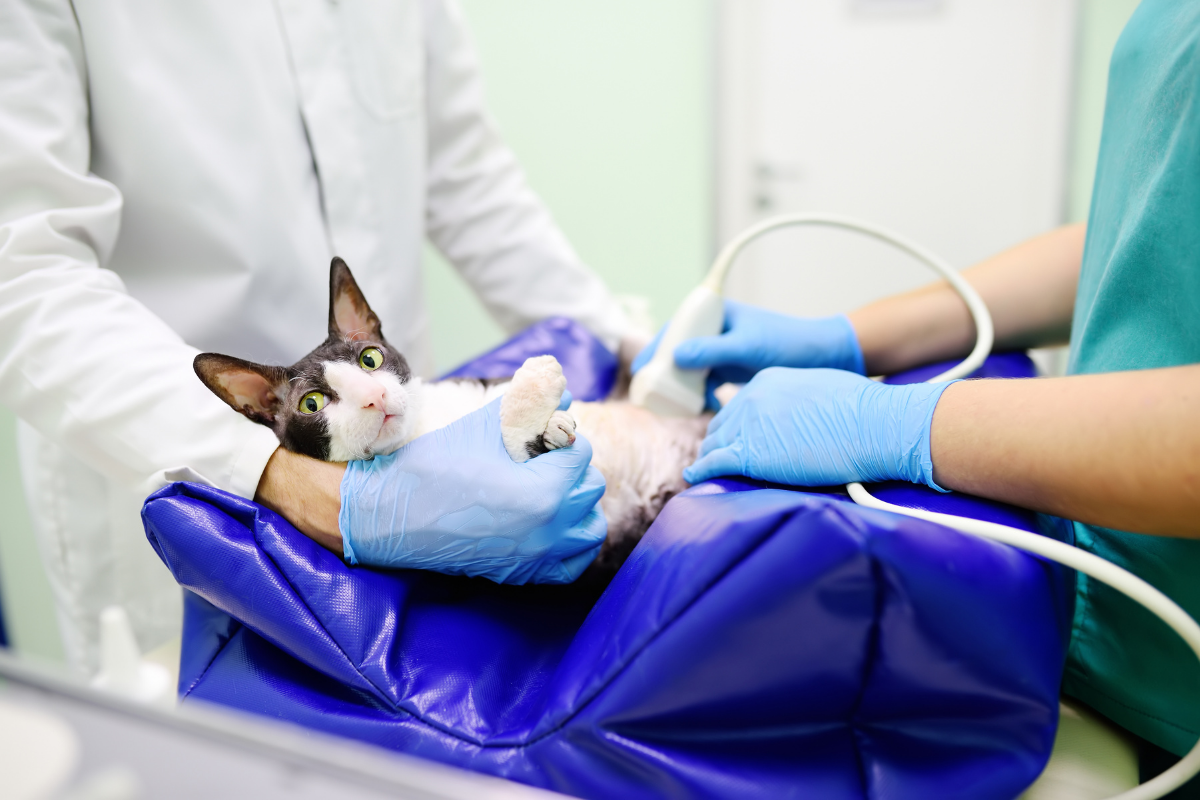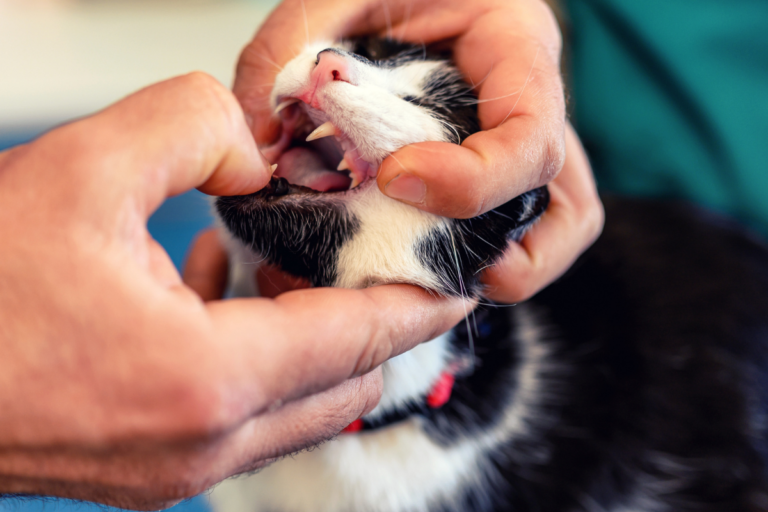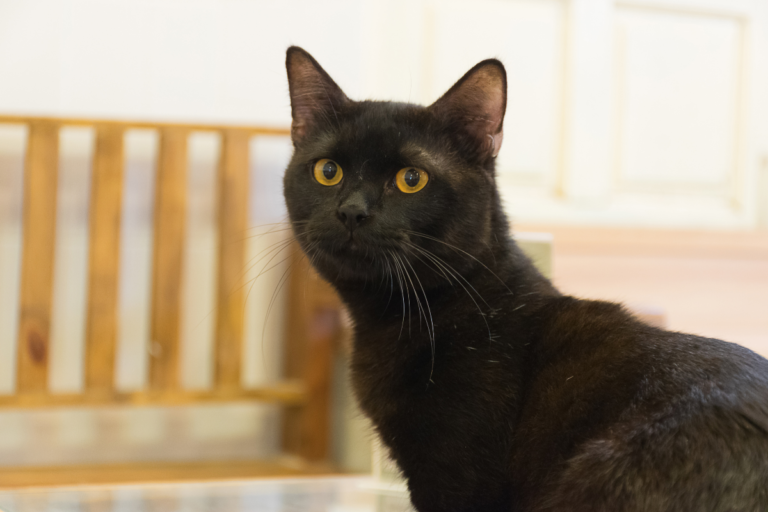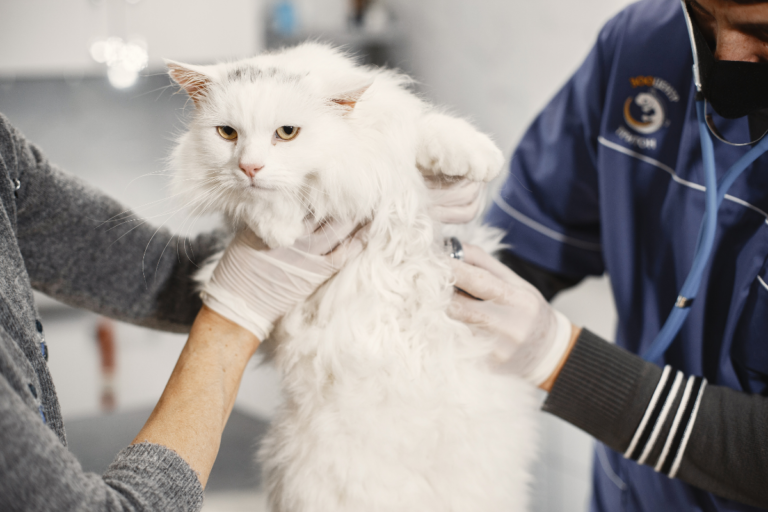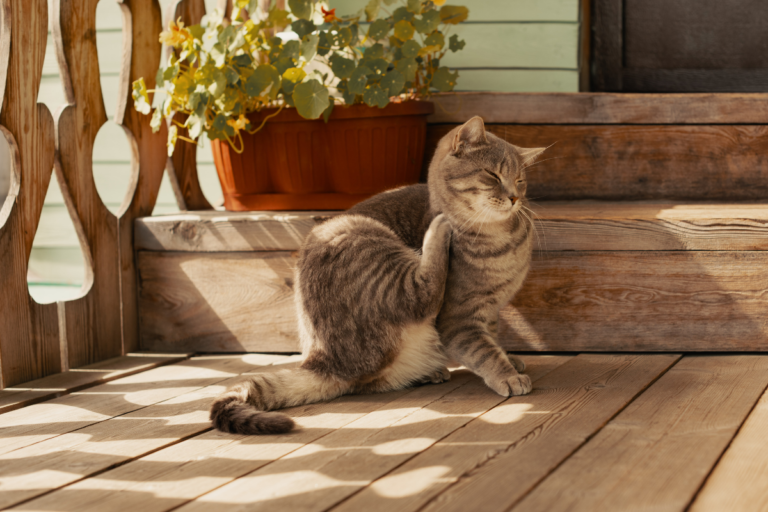From Concern to Care: Managing Cat Liver Problems as Pet Owners
Understanding Cat Liver Problems
Hey there, fellow cat enthusiasts! Let’s get the scoop on what makes our furry friends feel under the weather, especially when it comes to their liver. We love our cats, right? So, it’s good to know what could mess with their liver and what to keep our eyes peeled for.
What Puts The Liver In A Pickle
Okay, here’s the lowdown. Some things make liver trouble more likely for our whiskered pals. Being in the know helps us swoop in like superheroes and tackle these problems early.
-
Age: Old kitties are more often the victims of liver shenanigans.
-
Breed: You got a Siamese? Heads up. They can have more liver drama (Hill’s Pet Nutrition).
-
Obesity: Got a chunky cat? Watch out for liver issues like hepatic lipidosis.
-
Medications: Certain meds, especially the ones with acetaminophen, are like kryptonite for kitty livers.
-
Infections: Nasty bugs—be they bacterial, viral, or parasitic—can mess with liver workings (petMD).
-
Toxins: Some gnarly chemicals wreak havoc on livers.
-
Endocrine Disorders: Stuff like hyperthyroidism doesn’t play nice with the liver.
-
Genetic Quirks: Genetics also plays its hand—like Persians and Abyssinians with hepatic amyloidosis in their DNA.
Spotting The Bad News
Being on the lookout can spell the difference between a quick recovery and a rough patch. Here’s what we gotta watch for if our cats are acting weird.
Common problems show up alongside other kitty issues:
-
Yellowing of Gums and Skin: The dreaded jaundice—it’s that tell-tale yellow hint on gums, skin, and eyeballs (Bishops Stortford Vets).
-
Loss of Appetite: Kitty says “nope” to food? Especially the tubby ones? Uh-oh—think Feline Hepatic Lipidosis (Hill’s Pet Nutrition).
-
Vomiting: If your cat’s doing the barf dance often, something’s off in liver-town.
-
Increased Drinking and Peeing: Guzzling water and using the litter box like there’s no tomorrow? Hmm…not a good sign.
-
Weight Loss: Slimming down mysteriously? That’s gotta be looked into.
-
Oddly Dark Pee: A funky color in the toilet box might mean liver hiccups.
-
Fluid Buildup: Tummy looking extra plump? Could be ascites, not extra pounds, and that’s a liver problem.
-
Pale Gums: Gums looking too light? Might be anemia tagging along with the liver issues.
| Symptom | Possible Indication |
|---|---|
| Yellowing of gums/skin | Jaundice |
| Loss of appetite | Feline Hepatic Lipidosis |
| Vomiting | Liver worrying signs |
| Increased drinking/urination | Liver’s waving a red flag |
| Weight loss | Long-term liver issues |
| Dark-colored urine | Liver acting out in urine |
| Fluid buildup in abdomen | Liver mischief causing ascites |
| Pale gums | Anemia yelling “check the liver” |
Get your vet’s detective hat on for a proper diagnosis to separate liver woes from tricky health puzzles like diabetes or hyperthyroidism. For more health curveballs, roam around our pages on feline kidney disease symptoms and cat worms woes.
Knowing what’s up with liver issues helps us take the right steps to keep our fur babies healthy and happy. Let’s stay one step ahead and give our cats all the love and care they deserve!
Types of Liver Diseases in Cats
Okay, folks, let’s talk about our feline companions and their liver troubles. Yep, even cats can have liver issues. Knowing the different types helps us catch ’em early and manage ’em better. Here’s the scoop on the big three: fatty liver disease, inflammatory liver disease, and liver cancer.
Fatty Liver Disease
Fatty liver sounds like something from a cooking show, right? But for cats, it’s a thing called hepatic lipidosis, and it’s super common. It’s when too much fat (fancy word, triglycerides) gums up the liver, making it harder for the liver to do its thing. Usually, it kicks off after your cat stops munching for a few days—a real risk for chubby kitties. So, if your furball does this, rush to the vet faster than a squirrel up a tree.
| Factor | Impact |
|---|---|
| Chubby Kitty Syndrome | More likely to get hepatic lipidosis |
| Ignoring Food Bowl | Sets it off |
| Outlook | Good if caught early (WebMD) |
Want to keep your cat at purr-fect weight? Check out our tips on healthy cat weight and over weight cat.
Inflammatory Liver Disease
Next up, inflammatory liver disease. Sounds serious, right? It includes critters like cholangitis, cholangiohepatitis syndrome, and lymphocytic portal hepatitis. These guys often tag along with buddies like inflammatory bowel disease, pancreatitis, and even kidney woes (Merck Veterinary Manual).
| Condition Type | Buddy Diseases |
|---|---|
| Cholangitis/Cholangiohepatitis | Bowels on a Rampage, Pancreas Problems, Kidney Grumbles |
| Lymphocytic Portal Hepatitis | Loves Other Inflammatory Pals |
| How to Spot ‘Em | Blood Tests, Ultrasounds, Liver Peeks (Merck Veterinary Manual) |
Liver Cancer
Now, let’s chat about the big bad liver cancer. It’s not seen as often as the others, but when it hits, it means biz. It can start in the liver or pop up there from somewhere else. Sneaky symptoms mean you’ve got to keep an eagle eye on your kitty and ring up the vet if anything’s off.
Early diagnosis and vet visits are key, says WebMD – Liver Disease in Cats. Tests include all the usual suspects: blood gabs, ultrasound peeks, and liver checks.
Knowing about these liver issues in your cat helps you jump into action when you spot something fishy. And don’t play guesswork—get to the vet for the right diagnosis and treatment plan!
Diagnosis and Treatment
Let’s chat about when kitty’s liver hits a bump in the road. Spotting the signs early and knowing what to do makes all the difference. We’ll walk through how we can work with our vets to figure out liver troubles in our feline friends and the ways we can get them back to purring contentedly.
Diagnostic Procedures
Getting to the bottom of liver issues in our fur-babies involves a bit of detective work, starting with what’s known as:
Physical Exam:
First, our vet will give kitty a good look-over, eyeballing any yellowing of skin and eyes (a clear “yellow alert”), shedding pounds, or even oddball behavior – all flags of possible liver dilemmas (VCA Hospitals).
Bloodwork and Urinalysis:
Next up, it’s time for some lab sneezing! Blood tests and taking a peek at urine samples help find wobbly enzyme levels or sneaky signs that all’s not well in liver land (petMD).
Specialized Blood Tests:
Our vet might call for extra-special blood tests to pinpoint exactly which kind of liver snafu we’re facing.
Imaging Techniques:
To really see what’s up inside, ultrasound or X-rays get used to peek at liver shapes, sizes, or any wonky twists and turns.
Liver Biopsy:
When all else leaves questions, a tiny piece of liver might get nabbed for a closer look. While kitty will need a snooze (anesthesia), worry not—most cats come through it just fine.
Treatment Approaches
Alright, diagnosis done, what’s next? Here’s a breakdown of how we might tackle kitty’s liver issues:
| Treatment Approach | Description |
|---|---|
| Dietary Changes | Tweaking what kitty eats might help. Lowering protein can aid, but let’s not forget they’re devoted carnivores—they still need prime quality meat protein on the plate (VCA Hospitals). |
| Medications | Depending on what’s ailing the liver, kitty might need meds to knock out infections or tame the flames of inflammation. |
| Supportive Care | Getting enough fluids and keeping electrolytes in check is a must. This often means IV drips or other care steps to bring kitty back to her playful self. |
| Surgery | If there’s a physical snag like shunts or nasty lumps, some surgical magic might be called for. Remember, looking after fluffball post-op is vital for recovery success. |
Learning the symptoms of liver problems in cats means we can rush in with medical help sooner rather than later. Check out other common kitty headaches like cat illness, cat disease, and feline kidney disease symptoms to stay a step ahead in keeping our purr pal healthy!
Prognosis and Recovery
Early Intervention Benefits
Spotting liver problems in cats before they spiral makes a world of difference. The liver’s got this wild superpower to bounce back, sorta like hitting the reset button. If we catch issues in time and go hard with treatment, our feline pals often pull through and back to their mischievous selves. Nipping it in the bud can stop nasty stuff like biliary cirrhosis and hitting the acute liver failure wall (gotta love WebMD’s insights on cat liver hiccups).
Some perks of stepping in early:
- Dodging severe liver damage
- Keeping other complications at bay
- Boosting overall kitty comfort and shenanigans
| Condition | Early Intervention Prognosis |
|---|---|
| Fatty Liver Disease | Good |
| Inflammatory Liver Disease | Fair to Good |
| Liver Cancer | Varies with treatment |
Euthanasia Considerations
For most kitties, the right treatment spells a clean bill of health, but sometimes, we hit rough waters. When a cat’s prognosis is grim and they’re just not living their best life anymore, euthanasia might be the kindest path (petMD might have a say).
Things to mull over when pondering this tough call:
- How your cat’s doing right now
- Chances of bouncing back
- The vet’s insights and guidance
We totally get it; thinking about this stuff is tough. Our mission is to always put our furry companions’ well-being front and center.
Poke around our other articles for more cat-friendly intel, like on cat liver problems symptoms and cats dental disease.
Special Considerations for Cat Liver Health
When it comes to our purring pals, keeping their livers in tip-top shape can get a bit tricky. But don’t worry, we’re here to help you keep those little engines running smoothly. A splash of attention to their diet and a sprinkle of nutritional supplements can work wonders for those with liver problems.
Diet Recommendations
Swapping to a liver-friendly diet is a big part of taking care of your cat’s health. Cats are born hunters, needing a hefty dose of meat goodness. We need to get that balance just right, ensuring they have enough protein to heal but not so much they find themselves in trouble.
- Protein: Despite what you’ve heard, felines with liver issues still need plenty of protein to fix things up. The trick is using top-notch meat protein. If your cat’s more into their milk and soy, they might need extra taurine to keep things balanced. And yes, milk without the cookies might need Taurine sprinkles.
- Fat: Unlike some critters, cats have a naturally higher need for fats. But don’t go wild; keep tabs on their intake as per their kitty needs.
- Palatability: The food’s got to be tasty. Cats with liver woes must chow down regularly, so see your vet for prescription diets that make them purr.
Here’s a quick rundown of what to keep in mind for your kitty’s meals:
| Nutrient | What to Do |
|---|---|
| Protein | Go for high-quality meat protein; enough to support liver repair |
| Fat | Keep an eye on needs; each cat is unique |
| Palatability | Get super tasty food; it encourages munching |
Vitamin and Mineral Supplements
Gosh, supplements can really give a boost to liver health, but we should play it safe and always check in with a vet first.
- Milk Thistle: This isn’t your regular thistle; it’s like magic! Milk thistle shepherds liver cells back to life, chases away the bad stuff, and even gives them a protective hug.
- Taurine: For kitties on a diet of non-animal foods, taurine is a must. It plays its part in many body functions, including keeping the liver in good shape.
- Other Vitamins and Minerals: Depending on what’s going on, your vet could suggest other goodies like Vitamin E and B-vitamins to help out.
If you’re curious about how some other health hiccups could mess with your furball’s liver, check out our articles on cat diabetic and feline kidney disease symptoms.
Giving thought to what they eat and the extra bits they need can really make a difference to your cat’s liver and general well-being. For further chatter on feline health, dip into our reads on healthy cat weight and cats heart.
Specific Liver Conditions
Alright, folks, we’re diving head-first into the wild and wacky world of cat liver issues. It’s a hot topic, and we’re going to give you the lowdown on two biggies: portosystemic shunts and hepatic lipidosis. Get ready to be in the know!
Portosystemic Shunts
If you’ve got a Persian or its fancy cousins, Cornish or Devon Rex, listen up! These fancy felines might have a genetic hiccup called portosystemic shunts. It often shows up in young cats as an unsettling bypass where an unwanted blood vessel leaves the liver out of its cleansing loop. Yeah, not great. This can kick off some major liver headaches.
What should you have your peepers peeled for? Well, if your kitty’s gulping more water than usual, losing their lunch (or dinner), having the runs, or you’re noticing a rather concerning belly bloat or odd behavior, it might be time for a vet visit. A little peek inside with an ultrasound or a tiny liver sampling (biopsy) often seals the diagnosis deal.
Getting back on track usually involves two steps:
- Surgery: To kick that shunt to the curb.
- Meds: To help your cat feel better along the way.
| Symptom | Frequency |
|---|---|
| Vomiting | High |
| Excessive Thirst | Moderate |
| Diarrhea | High |
| Ascites | Moderate |
| Neurological Signs | Intermittent |
Spotted these symptoms? Don’t panic, but do get your cat to the vet, stat! Quick action can make all the difference. Check our cat illness guide for more kitty conditions.
Hepatic Lipidosis
Moving right along to hepatic lipidosis, also known by its cooler name, fatty liver disease. It’s a hangover from a poor-meal spell, especially for our fluffier felines. Stress—be it from moving house, checking into a cat hotel, or the usual kitty illnesses—can turn things sour real quick.
Here’s what to look out for with this one:
- Quick weight drop
- Yellow turn in skin and eyes (jaundice)
- Cat-nap level of energy
- Appetite dive
- Puking every now and then
A biopsy may be the golden ticket to figure out this puzzle and plan the next steps for getting the liver back to fighting fit (VCA Hospitals).
Here’s what a game plan could look like:
- Feeding plan: Protein and calorie check (the more, the merrier here)
- Fluids: Keep ’em flowing to beat dehydration
- Vitamins: Load up on Vitamin E and the B-complex gang
| Symptom | Frequency |
|---|---|
| Severe Weight Loss | High |
| Jaundice | Moderate |
| Lethargy | Moderate |
| Decreased Appetite | High |
| Vomiting | Moderate |
Keeping tabs on your cat’s diet, especially if life’s handing them lemons, can keep things smooth sailing. For all things cat weight, health, and happiness, chew over our healthy cat weight page.
For more scoop on keeping your kitty’s liver and more in tip-top shape, pencil in a visit to our topics on cat dental disease, healthy cat weight kg, and senior cat weight loss.
Impact of Other Health Conditions
Our purring pals can run into liver issues when grappling with other sneaky health problems. It’s useful to get a handle on how things like diabetes mellitus and hyperthyroidism can mess with your cat’s liver mojo.
Diabetes Mellitus
Cats with diabetes mellitus are part of a club with a knack for developing hepatic lipidosis. This condition can sneakily make them shed weight like fur in the summer, leading to fatty liver disease. Diabetes gets those liver fats a-movin’ and shakin’, messing up liver duties. So, it’s up to us to keep an eagle eye on our cat’s weight and keep their diabetes in check.
| Condition | Risk of Hepatic Lipidosis |
|---|---|
| Diabetes Mellitus | High |
Regular vet check-ups and blood tests are our best pals in spotting liver gremlins early. Watch for signs like them being a couch potato, throwing up, or turning a tad yellow. For a whole scoop on liver trouble signs, peek at cat liver problems symptoms.
Hyperthyroidism Implications
Hyperthyroidism can be a pesky intruder causing liver woes in our kitties. When thyroid hormones take the express lane, they can bump up those liver enzyme levels, hinting at liver stress. If your feline seems to lose weight while eating like there’s no tomorrow and bouncing off the walls, hyperthyroidism might be afoot.
| Condition | Liver Enzyme Levels |
|---|---|
| Hyperthyroidism | Elevated |
Taking care of hyperthyroidism might mean meds, radioactive iodine treatment, or even some surgical snipping. Sorting out thyroid drama often helps the liver get back on track (Merck Veterinary Manual). Chat with your vet to figure out the best game plan for your furball.
Keeping tabs on our cat’s health and knowing how other issues might bug their liver can make a world of difference. For a deeper dive into kitty health shenanigans, visit cat illness.
